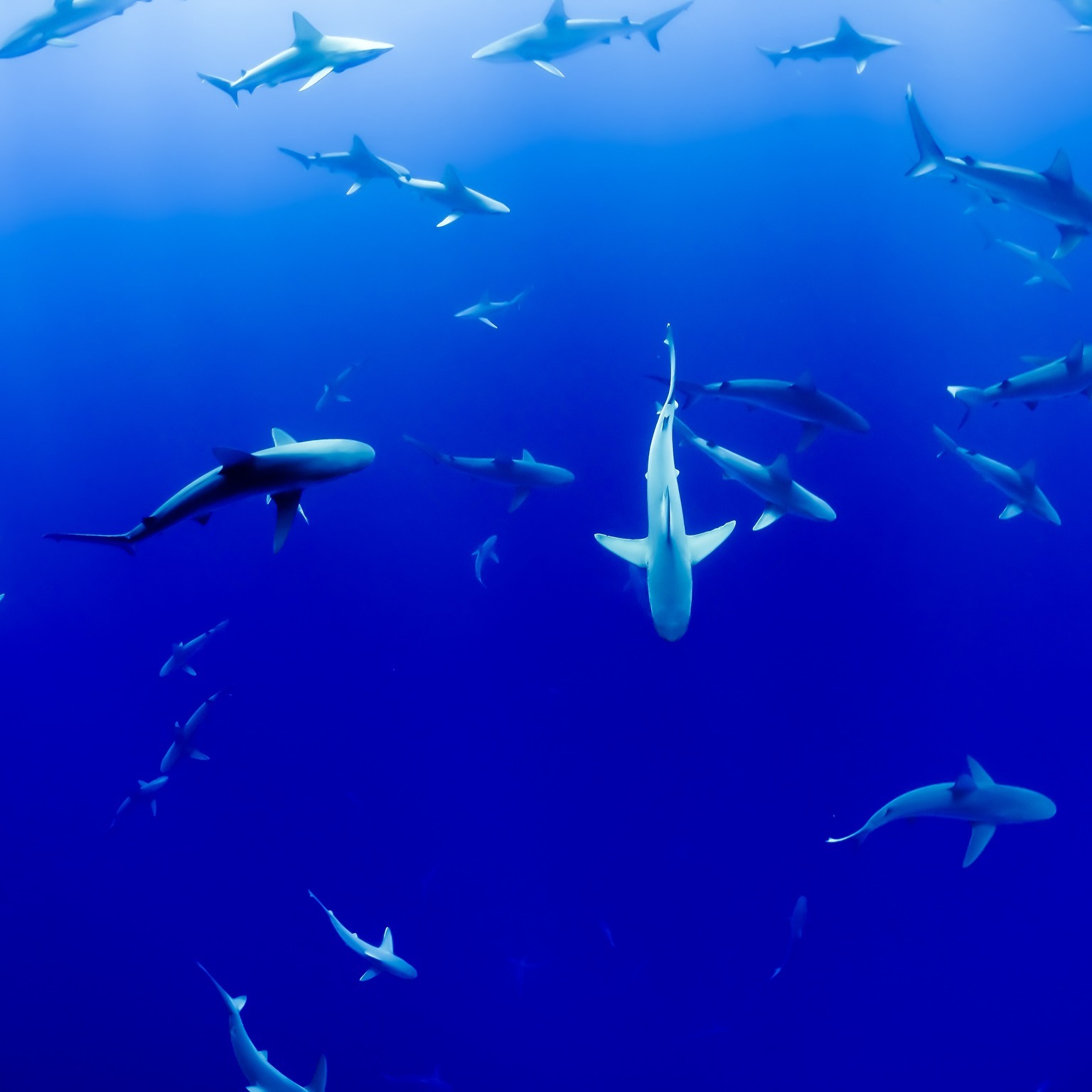Texas Shorelines: Shark Week! Celebrating the Fins, The Myths, The Legends
Every July, people all over the United States gather to celebrate what is considered by many to be the biggest holiday of the year. That’s right, we’re talking about Shark Week!
Jul 11, 2023 By Corley-Ann Parker
3 minutes
 Several sharks swimming in open ocean.
Several sharks swimming in open ocean.Every July, people all over the United States gather to celebrate what is considered by many to be the biggest holiday of the year. That’s right, we’re talking about Shark Week!
Sharks can be found in every ocean and some species can even be found in freshwater environments. Habitats for sharks are incredibly varied: some sharks live in the deep sea while others can be found in shallower waters, and certain species of sharks even migrate hundreds of miles across the open ocean.
As for taxonomy, sharks belong to the class Chondrichthyes, which includes all fish that have skeletons made of cartilage. Sharks are then further divided into 8 orders: Frilled & Cow Sharks (Hexanchiformes), Bramble Sharks (Echinorhiniformes), Dogfish Sharks (Squaliformes), Sawsharks (Pristiophoriformes), Angel Sharks (Squatiniformes), Bullhead Sharks (Heterodontiformes), Mackerel Sharks (Lamniformes), Carpetsharks (Orectolobiformes), and Ground Sharks (Carcharhiniformes). They are also very closely related to skates and rays!
Reactions to sharks vary from fear to fascination, and there are many myths surrounding these creatures and their behavior. One of the most commonly heard myths is the false allegation that sharks are bloodthirsty predators that will actively seek to prey on humans. In reality, most shark species are actually small and relatively harmless to humans. In fact, a majority of unprovoked shark bites happen because the shark is testing to see if the person is a food source and not a malicious attack. Sharks may take a “test bite” out of a surfer or swimmer who appears to look like a seal or sea lion to see if they are the food they are seeking, but in most cases, when the shark realizes that a person is not in fact a food source, they will leave the human alone.
If you’ve ever heard the saying that you’re more likely to get struck by lightning than bit by a shark, that actually holds true! The average of U.S. shark attacks per year is roughly 19, with only one fatality every one to two years. In comparison, lightning strikes kill an average of 38 people annually in the coastal U.S. People falling in holes on the beach, bicycle accidents, and other animals like bears and alligators also kill more people annually than sharks do. Furthermore, it was actually documented that the number of humans that suffered bites from other humans in New York City was greater than the number of humans that were injured by sharks in the entire United States!
One major fact to take away about sharks this year is that sharks are vital to healthy ocean ecosystems. Because they sit at the top of the food chain, they can balance ecosystems by regulating prey densities and ensuring biodiversity. It is also estimated that one-third of shark species are threatened with extinction. So, be sure to spread your knowledge of fact vs fiction for these legendary creatures, and celebrate sharks this Shark Week instead of fearing them!
Other Resources:
https://www.sharktrust.org/shark-taxonomy
https://stories.texasseagrant.org/sharkweek22/index.html
https://www.floridamuseum.ufl.edu/shark-attacks/odds/compare-risk/
https://www.floridamuseum.ufl.edu/shark-attacks/odds/
https://www.iucnredlist.org/resources/dulvyetal2021
Texas Shorelines is a service of the Texas Sea Grant College Program at Texas A&M University. Texas Sea Grant is a unique partnership that unites the resources of the federal government, the State of Texas and universities across the state to create knowledge, tools, products and services that benefit the economy, the environment and the citizens of Texas. It is administered through the National Oceanic and Atmospheric Administration and is one of 34 university-based Sea Grant Programs around the country. Texas Sea Grant is a non-academic research center at Texas A&M University. The program’s mission is to improve the understanding, wise use and stewardship of Texas coastal and marine resources.
